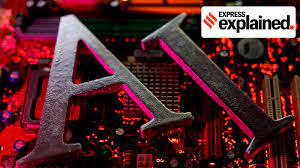January 27, 2024
Europe’s Shift: From Global Tech Regulator to AI Innovation Advocate
Introduction:
• The European Union (EU) has undergone a significant transformation in its approach to artificial intelligence (AI), shifting from a stringent regulatory stance to becoming an advocate for AI innovation. This change is aimed at fostering the development of trustworthy AI within the EU. In contrast, India is contemplating a similar trajectory, exploring a public-private partnership model to establish high-capacity data centers to support the burgeoning AI ecosystem.
Europe’s AI Innovation Plan:
• The European Commission has recently unveiled a comprehensive package of measures to bolster AI innovation, particularly for startups and small businesses. A pivotal component of this plan involves the acquisition, upgrading, and operation of AI-dedicated supercomputers. These supercomputers are intended to facilitate rapid machine learning, large-scale AI model training, and broaden access to AI resources for both public and private entities, including startups and SMEs.
The key elements of the EU plan include:
Supercomputers for AI Development:
• Acquiring and operating AI-dedicated supercomputers for efficient machine learning.
• Privileged access to supercomputers for AI startups and the broader innovation community.
Ecosystem Support:
• Support for the AI startup and research ecosystem in algorithmic development, testing, evaluation, and validation of large-scale AI models.
Applications Development:
• Enabling the development of diverse AI applications based on General Purpose AI (GPAI) models.
Similarities with India’s Approach:
• India, too, is formulating an ambitious AI Mission, earmarking a substantial budget for the development of ‘sovereign AI’ and computational capacity. The Indian government’s plan involves a public-private partnership model to establish high-capacity data centers, echoing the EU’s strategy. The aim is to provide affordable compute-as-a-service to startups, fostering an environment conducive to AI innovation.
The key components of India’s plan include:
Compute Capacity Building:
• Developing a significant compute capacity through partnerships, both within the government and through private entities.
Public-Private Partnership:
• Exploring various incentive structures for private companies to set up computing centers, including capital expenditure subsidies and operational expense incentives.
Digital Public Infrastructure:
• Creating a Digital Public Infrastructure (DPI) to offer startups access to computational capacity without the need for substantial GPU investments.
EU’s Motivation for AI Enablement:
• The EU’s pivot towards AI enablement is motivated by a desire to compete globally, particularly with the dominance of American companies in the AI landscape. Europe’s historically cautious approach, emphasizing human rights in technology regulation, has faced criticism for potential stifling of AI innovation. The EU’s recent legislative framework, the AI Act, imposes safeguards and restrictions on AI use, including stringent measures on facial recognition and the manipulation of human behavior.
Conclusion:
• As both the EU and India gear up to embrace the AI revolution, their strategies converge in fostering innovation through the development of computational capacity. The EU’s transition from a global tech regulator to an AI innovation advocate reflects a broader global trend towards encouraging AI development while implementing necessary safeguards. India’s alignment with such a trajectory underscores the universal recognition of AI’s pivotal role in shaping the future economic landscape.
January 30, 2025
January 20, 2025
January 14, 2025

